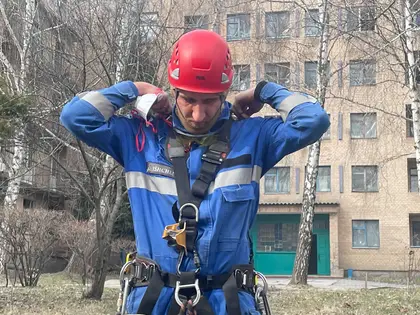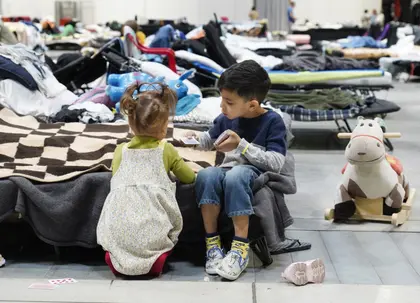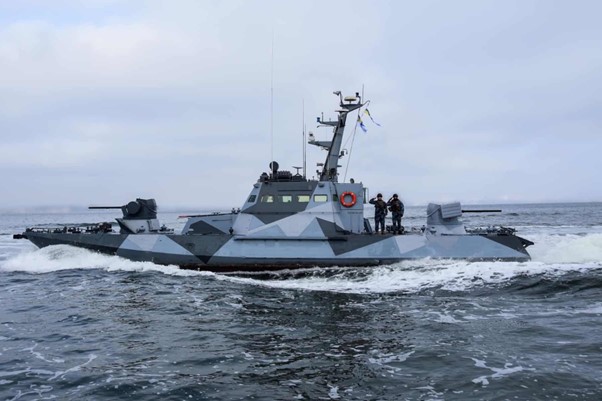Several weeks ago, the men of Ukraine’s elite rescue team travelled to Turkey to assist life-saving efforts following the tragic earthquake. There, they located, extracted and saved the life of a Turkish woman who had been under the rubble for more than 200 hours.
Today, at 6am in Rzychiv, a town on the Dnipro River some 70 kilometres south of Kyiv, they found a young boy alive on the 5th floor of his partly destroyed apartment building.
JOIN US ON TELEGRAM
Follow our coverage of the war on the @Kyivpost_official.
After being trapped for over four hours, he was among the lucky. Thus far, there are four dead and 20 in hospital from an apparent Shahed drone attack on residential buildings on the grounds of a technical college; an innocuous site in a region known for recreational boats rather than rocket propelled grenades.
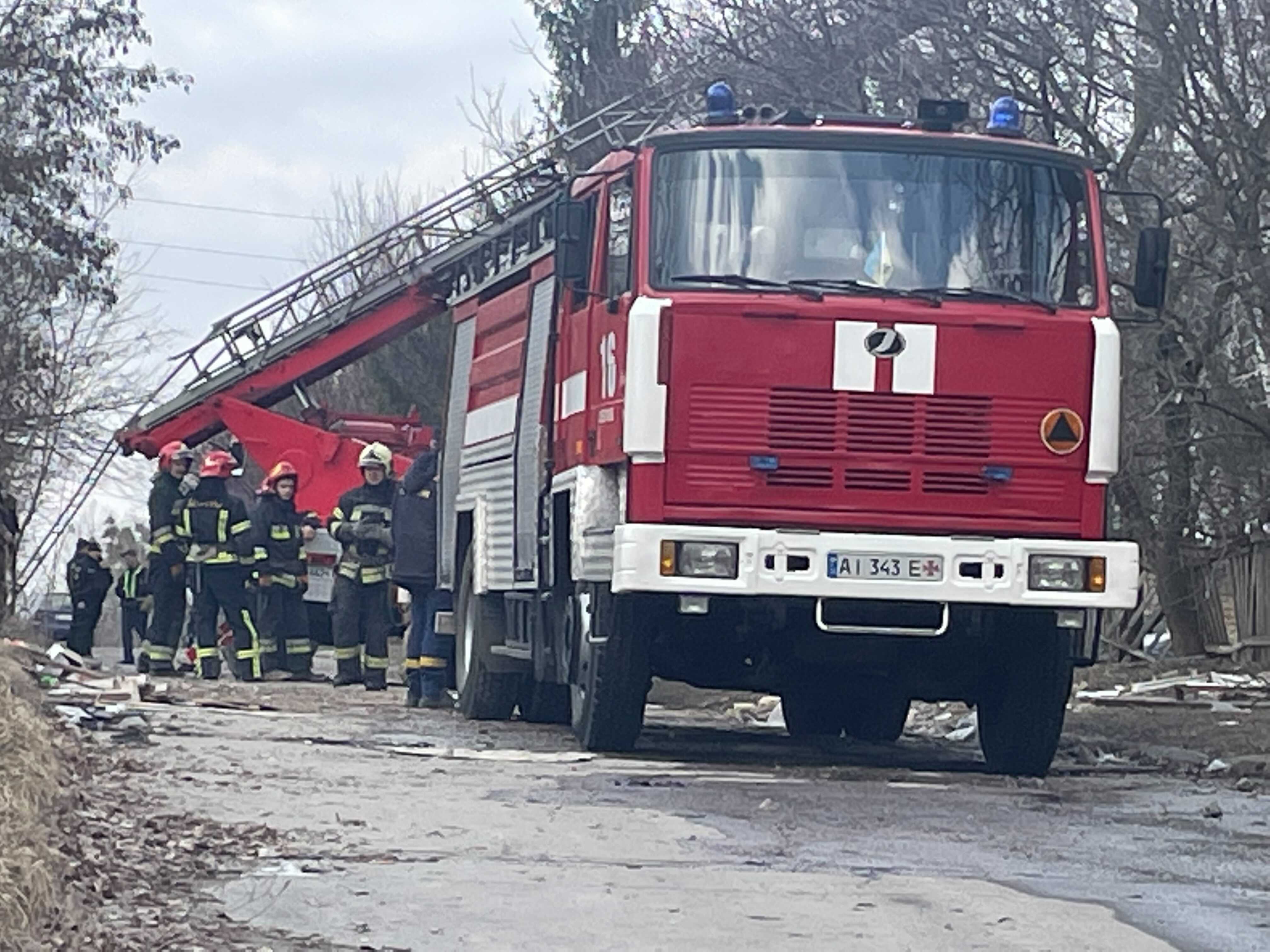
It is a sad fact that, after the countless missions they have carried out since Russia’s full-scale invasion across war-torn Ukraine, the Kyiv-based Mobile Rescue Service is now recognized as among the world’s leading experts in search-and-rescue.
“We are ready for this work. From the time you join the rescue service, you know that it will be difficult. It’s a choice we’ve made. Certainly, that choice has had its consequences during the war,” says Ivan, 41, who has been a medic with the unit for 15 years.
“We make sure to look after each other after the work. We talk things through – so that we don’t take it home.”

Ukraine’s Largest Drone Strike on Russia – How It Happened
The Service has 64 full-time members. Since February 2022, they have performed search-and-rescue missions in nearly every region of Ukraine: east, west, north and south: Sumy, Kharkiv, Lutsk, Rivne, Chernihiv, Zaporizhya, Kherson and other cities and towns.
As members of the Service prepare themselves to abseil into some of the craters of the buildings, they refuse to answer the media’s questions about the chances of anyone remaining alive among the ruins. They are serious men. The media pack scuttles away.
Serhii, 51, is an 18 year veteran of the service.
“I did many jobs before this. This is meaningful work. Work that needs to be done, especially now,” he says.
Serhii shows KyivPost the patch on his uniform. They are proud to be international certified as part of INSARAG, a global network of more than 90 countries and organizations under UN auspices that sets standards for urban search and rescue (USAR). The standards were established after shortcomings were noted during rescue efforts during the 1988 Armenia earthquake. They are applying the highest standards most actively in Ukraine’s cities and towns where some 38,000 residential buildings have been destroyed including in rocket and armed drone attacks.
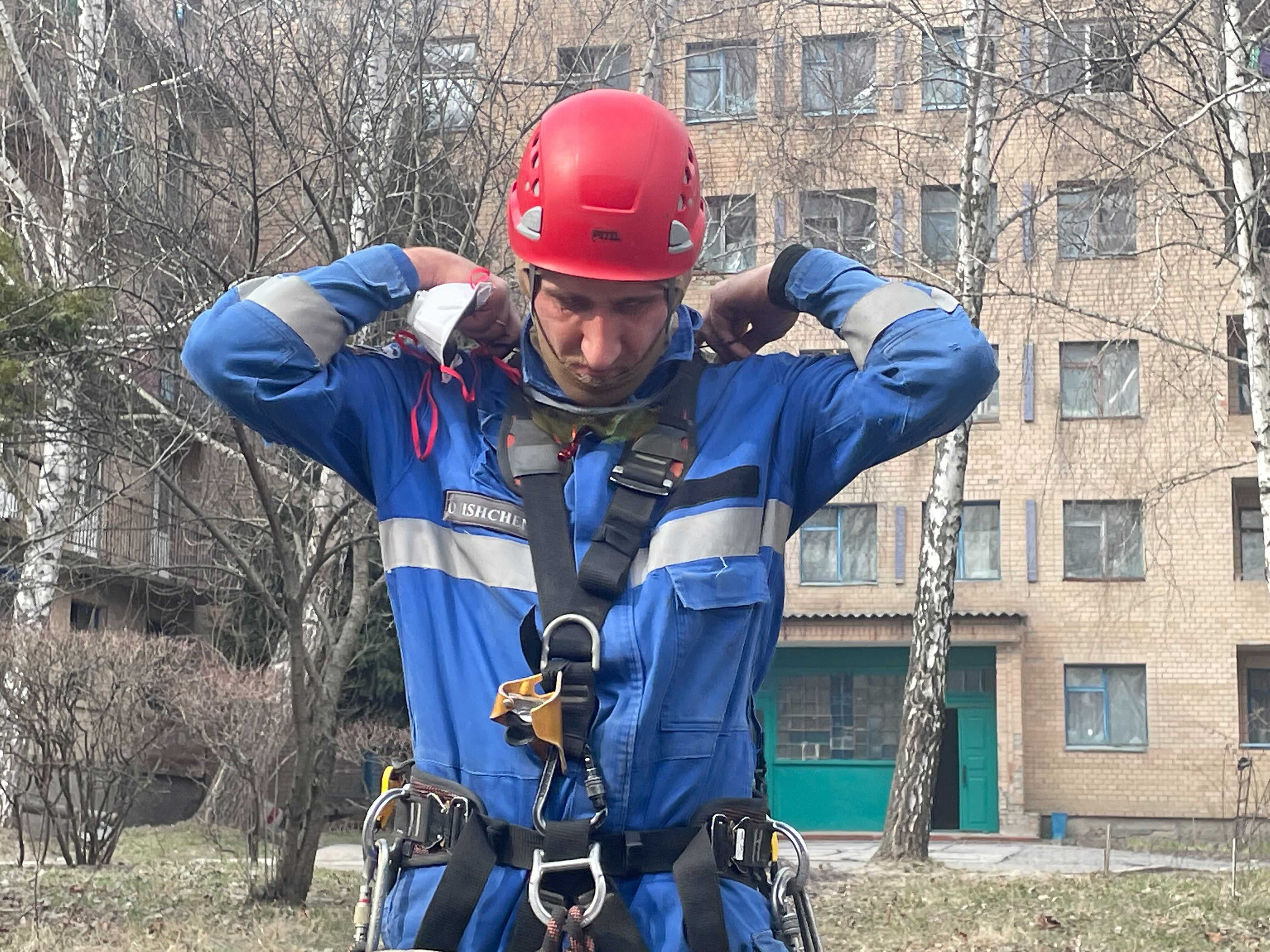
“We’re part of an international fraternity of rescuers. It’s specific and demanding work and it is good to know we’re not alone. Our colleagues overseas have been great about asking us what we need. Now, all the gear we are using is world-class,” Ivan says.
As part of the INSARAG approach, an important part of the team’s work is, according to Ivan, following their strict methodology. Evaluating a site; gathering information from locals; establishing search priorities; implementing step-by-step techniques. Their results are born of being careful, not mindlessly courageous.
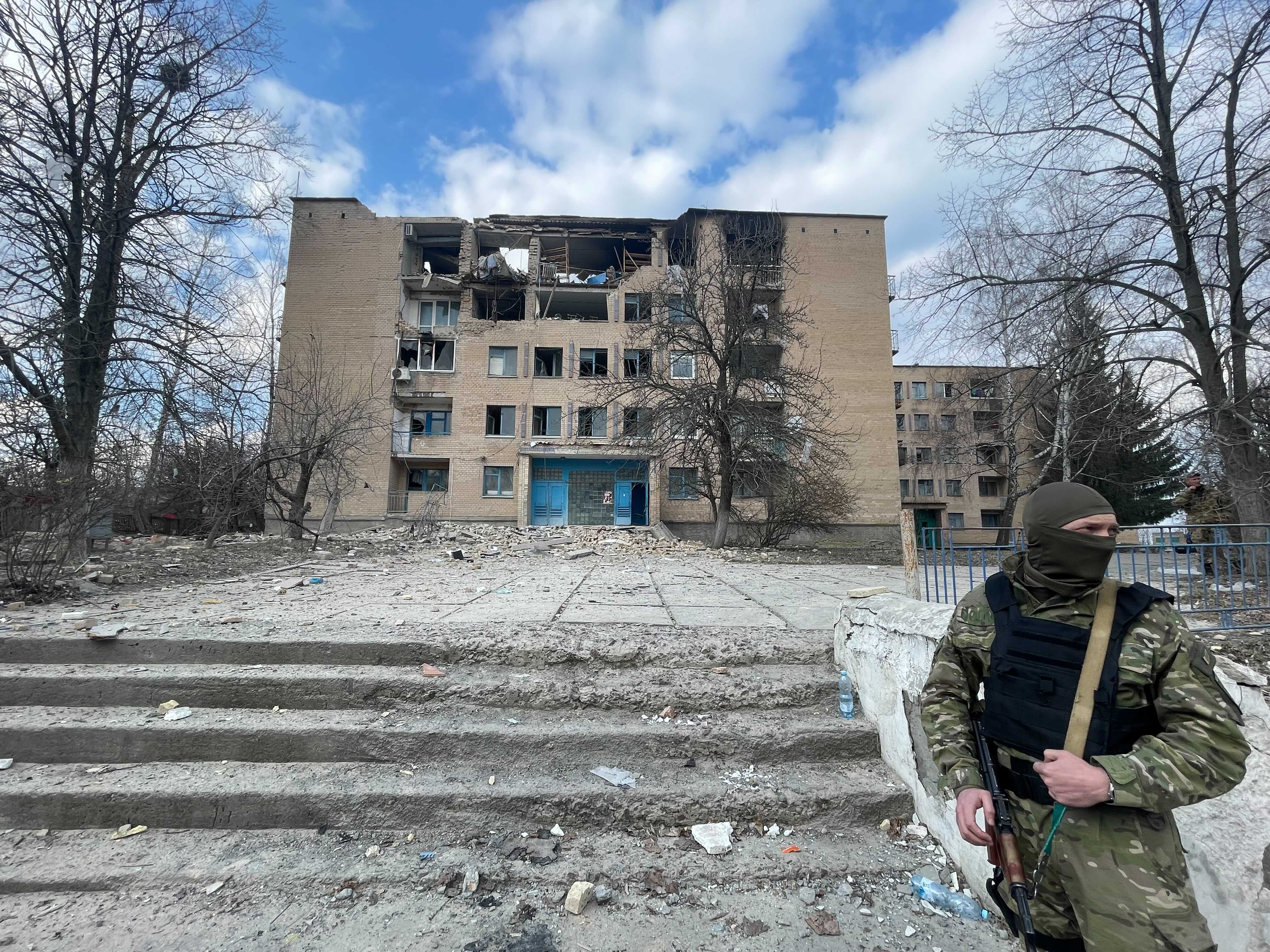
KyivPost askedone of Ivan and Serhii’s colleagues, who was about to, yet again, go back into the ruins after 10 hours of working on site, what he thinks of those who conducted this attack.
He takes a last pull from an espresso they’re all sharing. He hoists a heavy roll of abseiling rope over his shoulder, and adjusts his red helmet.
“They can go fuck themselves.”
You can also highlight the text and press Ctrl + Enter


